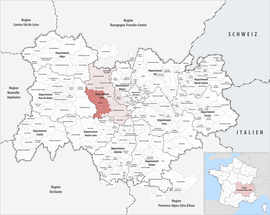HD 166
HD 166| 관찰 데이터 Epoch J2000.0 Equinox J2000.0 | |
|---|---|
| 콘스텔레이션 | 안드로메다 |
| 적경 | 00h 06m 36.7841s[1] |
| 적위 | +29° 01° 17.1993°[1] |
| 겉보기 등급(V) | 6.13 ~ 6.17[2] |
| 특성. | |
| 스펙트럼형 | K0Ve[2][3] |
| U-B 색지수 | +0.30[4] |
| B-V 색지수 | +0.755[4] |
| 변수 유형 | 작성자: Dra[2] |
| 아스트로메트리 | |
| 반지름 속도(Rv) | - 6.9±0[3].2km/s |
| 고유운동(μ) | RA:380.092±0.060mas[1]/년 - Dec.:802.573±0.037mas[1]/년 |
| 시차()) | 72.5764 ± 0.0498 mas[1] |
| 거리 | 44.94 ± 0.03 ly (13.779 ± 0.009 pc) |
| 절대 등급(MV) | 5.41[5] |
| 세부 사항 | |
| 덩어리 | 0.889[6] M☉ |
| 반지름 | 0.9172±0.0090[6] R☉ |
| 광도 | 0.6078±0.0099[6] L☉ |
| 표면 중력(log g) | 4.49±0.09[7] CGS |
| 온도 | 5509±34[7] K |
| 금속성 [Fe/H] | 0.00±0.03[7] 덱스 |
| 회전 | 6.23±0.01일[8] |
| 회전 속도(v sin i) | 4.1 km/s |
| 나이 | 78±28[7] 미르 |
| 기타 명칭 | |
| 데이터베이스 참조 | |
| 심바디 | 데이터. |
안드로메다자리 HD 166 또는 안드로메다자리 V439(ADS 69 A)는 안드로메다자리의 6등급 별이며 지구에서 약 45광년 떨어져 있습니다.용자리 BY형 변광성으로 등급 6.13에서 6.18 사이에서 변하며 [2]주기는 6.23일이다.안드로메다자리[9] 알파에서 1도 이내로 나타나며 헤라클레스-라 성협 운동성단의 [3]일원입니다.또한 그것은 적경 00h 00m에서 2도 미만입니다.
별의 특성
HD 166은 태양보다 차갑고 어두운 K형 주계열성으로, 분광형은 K0Ve이며[2], e 접미사는 스펙트럼에 방출선이 있음을 나타냅니다.이 별은 북쪽에서 114.1° 방향으로 매년 0.422초씩 고유 운동을 한다.이 별의 광도는 태양의 61%[6]로 추정되며 유효온도는 5,[7]327K로 흑체처럼 방출되고 있다.이 별의 지름은[6] 태양의 약 90%이며 지름 속도는 -6.9km/[3]s이다.연령 추정치는 채층 [7]활동을 기준으로 7800만 년에서 이론적인 진화 [6]궤적과의 비교를 기준으로 96억 년까지 다양합니다.이 별에서 X선 방출이 감지되었으며, 광도는 8.5×1028 erg−1 [10]s로 추정됩니다.
HD 166 주변에서 적외선 초과가 발견되었는데, 이는 반지름 7.5AU에 별 주위 원반이 존재함을 보여주는 가장 큰 증거입니다.이 먼지의 온도는 90 [11]K입니다.
가변성
HD 166의 광도변동성의 주기성은 [8]회전 주기와 일치한다는 것이 밝혀졌다.이는 BY Draconis 변광성으로 분류되는데, 이 변광성은 표면에 있는 큰 별점의 존재와 채층 활동에 의해 변화한다.
레퍼런스
- ^ a b c d e VizieR에서 이 소스에 Brown, A. G. A.; et al. (Gaia collaboration) (August 2018). "Gaia Data Release 2: Summary of the contents and survey properties". Astronomy & Astrophysics. 616. A1. arXiv:1804.09365. Bibcode:2018A&A...616A...1G. doi:10.1051/0004-6361/201833051.대한 Gaia DR2 레코드.
- ^ a b c d e N. N. Samus; O. V. Durlevich; et al. "V439 And database entry". Combined General Catalog of Variable Stars (2017 ed.). CDS. Retrieved 2018-11-12.
- ^ a b c d López-Santiago, J.; Montes, D.; Crespo-Chacón, I.; Fernández-Figueroa, M. J. (2006). "The Nearest Young Moving Groups". The Astrophysical Journal. 643 (2): 1160–1165. arXiv:astro-ph/0601573. Bibcode:2006ApJ...643.1160L. doi:10.1086/503183. S2CID 119520529.
- ^ a b Mermilliod, J.-C. (1986), "Compilation of Eggen's UBV data, transformed to UBV (unpublished)", Catalogue of Eggen's UBV Data. SIMBAD: 0, Bibcode:1986EgUBV........0M
- ^ Holmberg, J.; et al. (July 2009), "The Geneva-Copenhagen survey of the solar neighbourhood. III. Improved distances, ages, and kinematics", Astronomy and Astrophysics, 501 (3): 941–947, arXiv:0811.3982, Bibcode:2009A&A...501..941H, doi:10.1051/0004-6361/200811191, S2CID 118577511.
- ^ a b c d e f Boyajian, Tabetha S.; et al. (July 2013), "Stellar Diameters and Temperatures. III. Main-sequence A, F, G, and K Stars: Additional High-precision Measurements and Empirical Relations", The Astrophysical Journal, 771 (1): 40, arXiv:1306.2974, Bibcode:2013ApJ...771...40B, doi:10.1088/0004-637X/771/1/40, S2CID 14911430.
- ^ a b c d e f Rich, Evan A.; Wisniewski, John P.; McElwain, Michael W.; Hashimoto, Jun; Kudo, Tomoyuki; Kusakabe, Nobuhiko; Okamoto, Yoshiko K.; Abe, Lyu; Akiyama, Eiji; Brandner, Wolfgang; Brandt, Timothy D.; Cargile, Phillip; Carson, Joseph C.; Currie, Thayne M.; Egner, Sebastian; Feldt, Markus; Fukagawa, Misato; Goto, Miwa; Grady, Carol A.; Guyon, Olivier; Hayano, Yutaka; Hayashi, Masahiko; Hayashi, Saeko S.; Hebb, Leslie; Hełminiak, Krzysztof G.; Henning, Thomas; Hodapp, Klaus W.; Ishii, Miki; Iye, Masanori; et al. (2017). "The fundamental stellar parameters of FGK stars in the SEEDS survey Norman, OK 73071, USA". Monthly Notices of the Royal Astronomical Society. 472 (2): 1736. arXiv:1708.02541. Bibcode:2017MNRAS.472.1736R. doi:10.1093/mnras/stx2051. S2CID 58942857.
- ^ a b c Gaidos; et al. (2000). "Spectroscopy and Photometry of Nearby Young Solar Analogs". The Astronomical Journal. 120 (2): 1006–1013. Bibcode:2000AJ....120.1006G. CiteSeerX 10.1.1.43.4478. doi:10.1086/301488.
- ^ Autostar Suite 천문학자 에디션.CD롬, 미드, 2006년 4월
- ^ Micela, G.; Favata, F.; Sciortino, S. (October 1997), "HIPPARCOS distances of X-ray selected stars: implications on their nature as stellar population", Astronomy and Astrophysics, 326: 221–227, Bibcode:1997A&A...326..221M
- ^ Eiroa, C.; et al. (July 2013). "DUst around NEarby Stars. The survey observational results". Astronomy & Astrophysics. 555: A11. arXiv:1305.0155. Bibcode:2013A&A...555A..11E. doi:10.1051/0004-6361/201321050. S2CID 377244.


